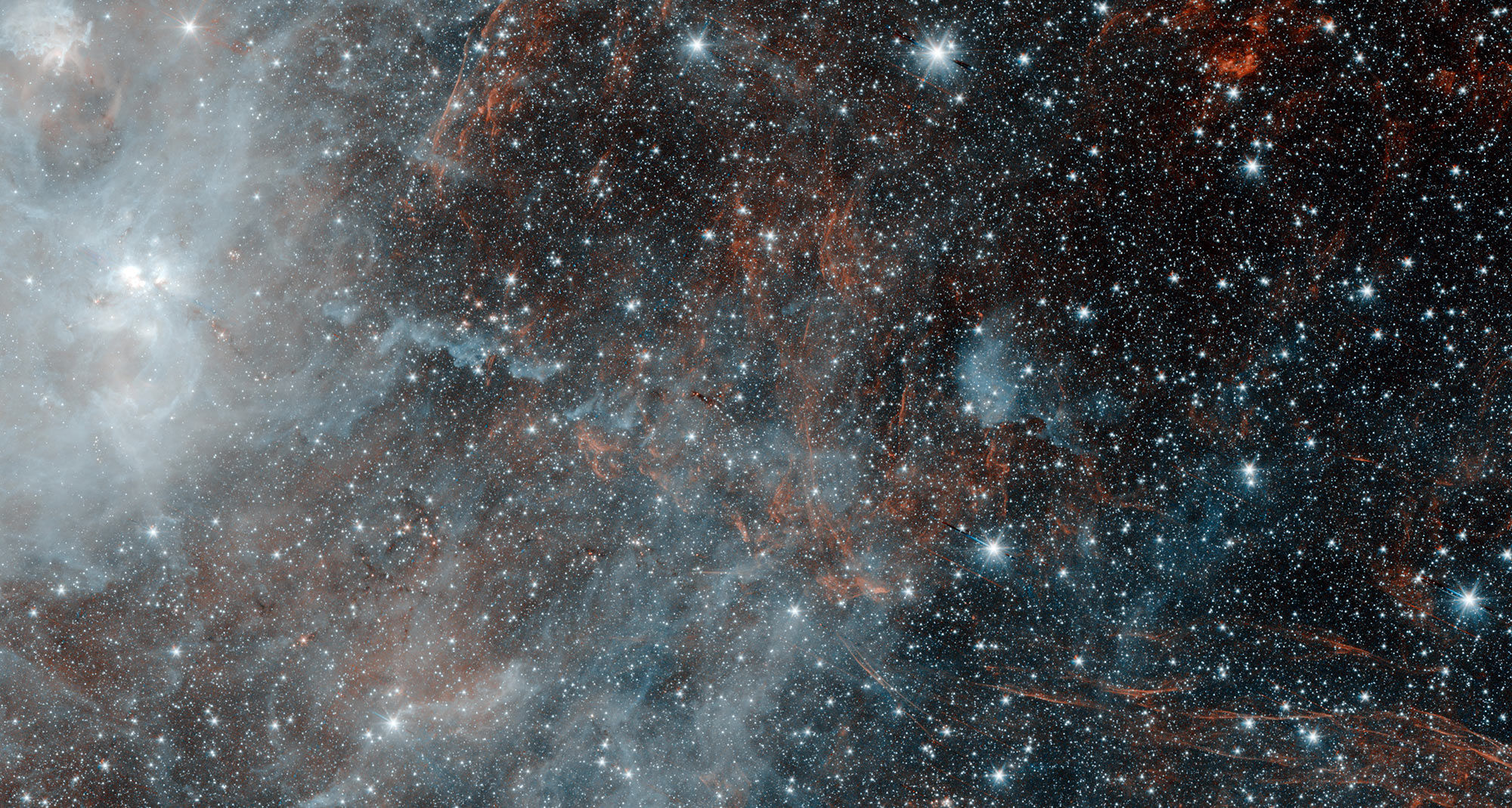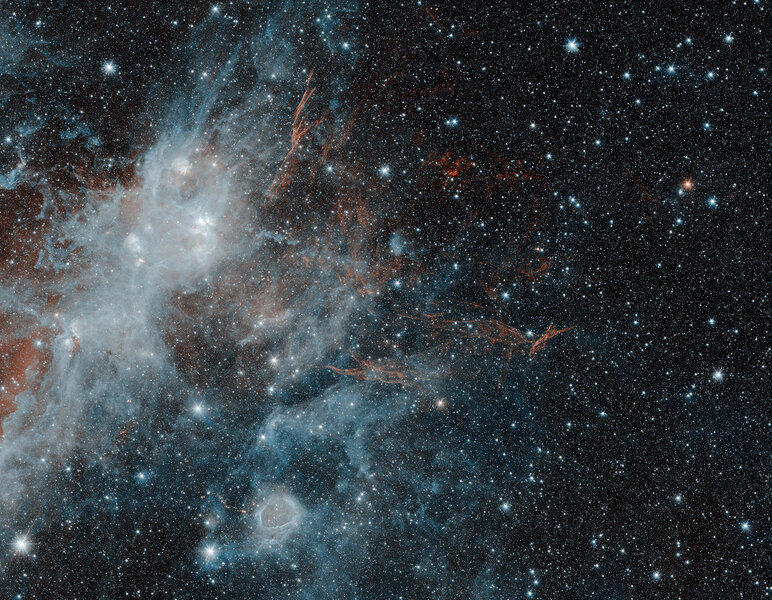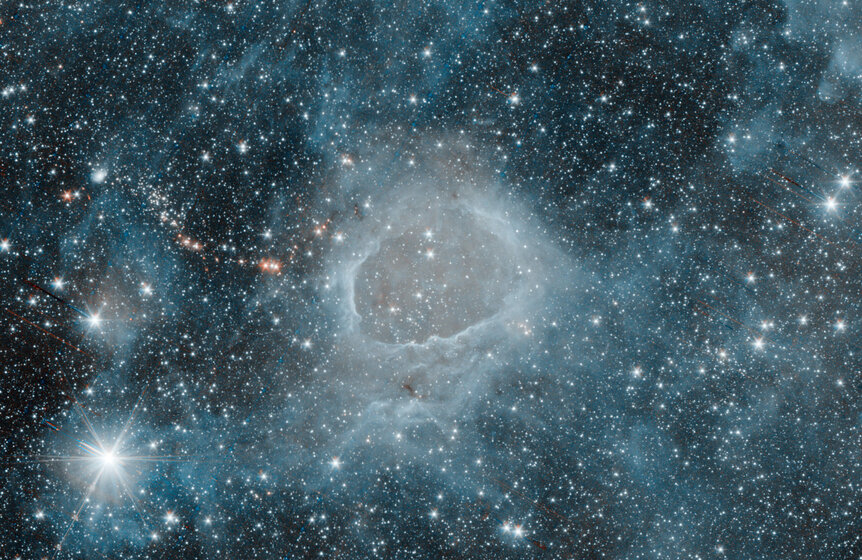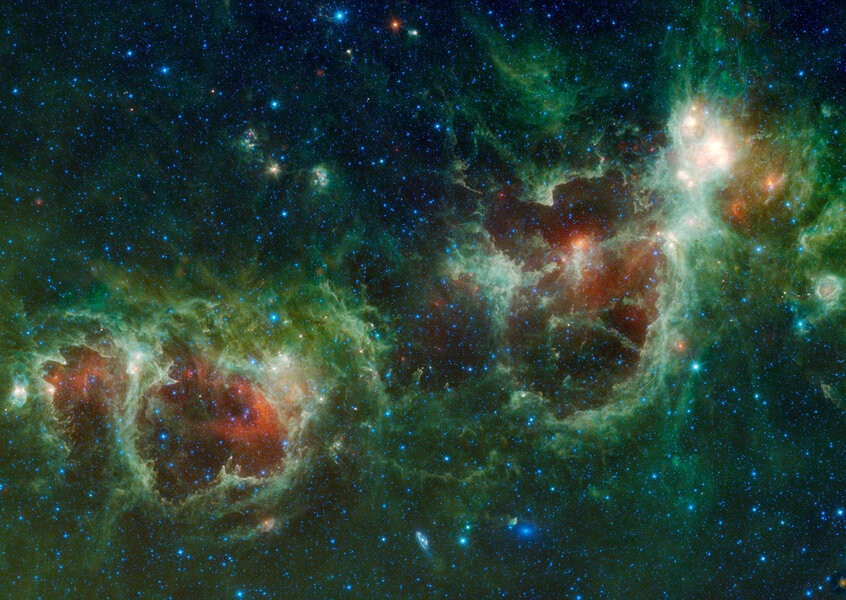Create a free profile to get unlimited access to exclusive videos, sweepstakes, and more!
An ancient fading ghost of a massive star haunts the night

I swear, there will come a day when I can just post a cool picture of some astronomical object and not go down a rabbit hole trying to figure out some side issue with it.
Today is not that day.
That spectacular image shows the debris from a supernova, the titanic explosion of a star at the end of its life. But it may take you a moment to spot it — it’s actually the wispy red filaments that make an open circle just above the center of the image!
That supernova remnant is called HBH 3, and it’s located about 6,500 light years away in the constellation of Cassiopeia. It’s so big and wispy I knew right away it was very old; younger supernovae nebulae are smaller and more compact. How old, though, isn’t clear; it may be around 100,000 years old, or it may be a million! It’s very hard to tell. Given its huge size — 150 light years across! — the advanced age doesn’t surprise me.
For comparison, the more famous Crab Nebula is only 1,000 years old, and it’s only 5 or 6 light years in diameter. As the debris (the gas from the explosion) expands, it slams into material around it and slows down. Clearly, from the image, there’s a lot of junk floating around that part of the galaxy! So it’s hard to say just how old the nebula is.
This image was taken using the Spitzer Space Telescope, and it’s in the infrared, light with wavelengths longer than our eyes can see. It’s only a two-color image, where blue is actually 3.6 micron light (about 5 times the wavelength of the reddest light you can see) and red is 4.5 microns. Longer wavelengths tend to be emitted by dust (grains of rocky material or long molecules of carbon that’s essentially soot), so I’m guessing what we’re seeing here is dust that’s piled up by the expanding debris, like snow at the edge of a snowplow.
It’s almost completely hidden by the chaos of blue material, which in this case is mostly part of two nebulae called NGC 896 (the bright knot to the upper left) and IC 1805 (the material to the left stretching off the side of the image), also called the Heart Nebula. It took me a couple of minutes to figure this out; I wound up going to SIMBAD and putting in “HBH 3”, then using the AladinLite viewer to scan around (that viewer is located at the upper right in your browser if you click the SIMBAD link; make it full screen and drag the image around to take a tour of the region). I recognized the Heart Nebula right away, which was convenient (another, easier route: The Spitzer press release mentions that the image shows parts of the nebulae called W3 and W4, which are different catalog names for NGC 896 and the Heart).
Interestingly, my eye was drawn to the flattened ring of blue light near the bottom middle of the image. Here’s a close-up, care of the whopping huge full-res shot from Spitzer:
Cooool. This is clearly an edge-brightened structure, a shell of material (probably gas) either like a soap bubble, a cavity where the edge looks bright (I describe how this works in an article about the nebula Abell 39), or snowplowed material pushed away from some central source.
You see this sort of thing sometimes when a clutch of stars is born deep inside a dense cloud of molecular gas and dust, but it’s not obvious to me that there are more stars inside that bubble than elsewhere. A single star can carve out a bubble, too, but those are massive, fiercely luminous beasts called Wolf-Rayet stars, and I don’t see any super-bright star there either. So I’m not sure just what this is!
If I had to put money down, I’d say lots of stars are being born there. I base this on another piece of information I realized: In the AladinLite visible light image, you can see NGC 896 and the Heart Nebula easily enough, but the location of this weird bubble is… blank. Empty. Dark.
However, it’s too dark. I’m serious! In astronomy, darkness doesn’t always mean a lack of stuff. It can sometimes mean that the dust in that region is so thick it blocks all the light from stuff behind it. In the AladinLite image, the area where the bubble is actually has a lower number of stars than elsewhere, making me think the dust is thick there. Infrared light can pierce the dust, though, so in the Spitzer image we can see the stars being born there, and the structures they carve into the surrounding material as they do.
Incidentally, the wonderful WISE observatory also took an amazing infrared shot of the NGC 896, the Heart, and another nearby nebula called the Soul Nebula (or W5). All of these are huge star-forming regions, so that’s another reason I think that bubble may be a stellar nursery. W5 can’t be seen in the Spitzer image (it’s outside the frame to the left), but you can identify bits of the other two.
Besides filling my heart with its beauty and my head with its science, this image also made me gnash my teeth a bit because trying figure out what’s what in an image can be difficult. From different wavelengths to different image rotations to just different catalog names, IDing things in the sky can be quite a task. The fun part is that once you do know what something is, you can start looking around for more info on it… and if you don’t know what it is, why, that’s a mystery to investigate! Scientists love those, too.





























